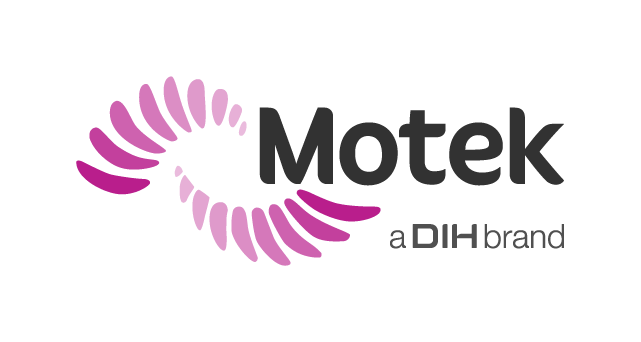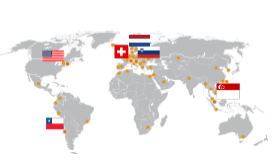October 5, 2022
Two perspectives on the C-Mill: the patient’s and the therapist’s
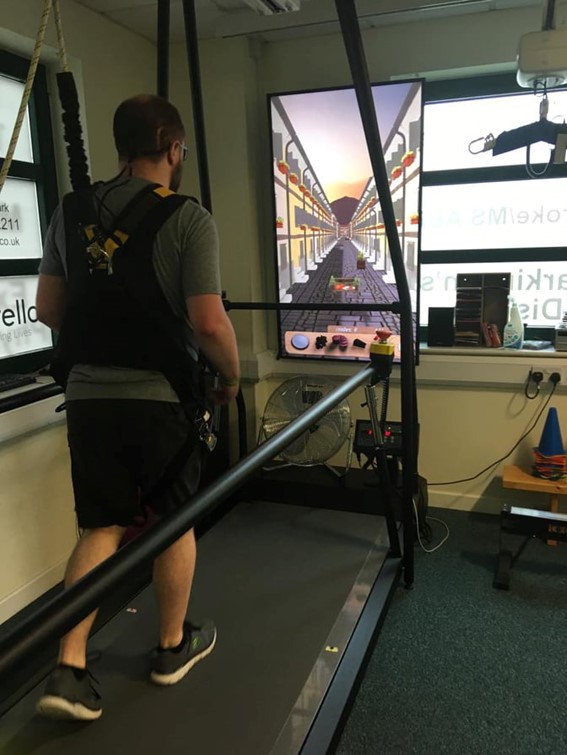
Figure 1: Rhys Holmes training on the C-Mill with the Italian Alps application
Morrello Clinic, Newport, United Kingdom
The Hocoma Clinical and Scientific Affairs Team had the opportunity to interview Rhys Holmes, neurological patient and Dr. Allison Cooper, Clinical Specialist Neurophysiotherapist at Morrello Clinic, Newport, UK, to learn more about their personal and professional experience with the C-Mill and to share it with you!
Rhys Holmes, patient:
After having had 20 or so brain operations over just four years, Rhys’ health was finally stabilizing. Whilst going through his rehabilitation, he was also diagnosed with superficial siderosis, a rare neurodegenerative condition. His mobility was heavily impaired, and his neurosurgeon had suggested that he use a wheelchair to get around after having to catch him when he had a near fall on the hospital ward. He approached Morrello Clinic in late 2020 after seeing a tweet about them from his local politician.
Dr Allison gave him an initial assessment to get an understanding of his condition and what he needed to work on to improve his mobility. After a few sessions using manual equipment and re-learning to walk with a heel to toe pattern, he was introduced to the C-Mill. He recounted his first impression as “wow, what an impressive bit of equipment it is! Straight after putting the harness on, I knew it was going to be a very safe environment to push myself without worrying about falling or getting injured. The width of the belt on the C-Mill is also great, especially when you have adapted a wide based gait to counteract the imbalance of a neurological condition”.
The first application he tried was the C-Gait assessment, which he found “fantastic as it introduces a variety of programs the C-Mill has to offer, from Stepping Stones to Avoiding Obstacles. It’s really fun to use, which takes your mind off the effort you are putting in to improve yourself. The fact it records distinct aspects of data such as weight distribution and gait, is so good to have as a reference to look back at and see how much improvement has been made”.
He also mentioned that the C-Mill has helped him to learn about his own condition, “in that I can see which areas I need to improve on. For example, I always found the Italian Alps game (where you must collect ingredients to make pizzas whilst avoiding the obstacles) exceedingly difficult, as moving side to side and walking with my feet close together, made me very dizzy. This prompted me to focus on practicing heel to toe at home, which has helped me improve. I am now able to use the program at a higher speed, and of course make more pizzas, which is a strangely satisfying goal of mine”.
Now, Rhys is continuing his sessions on the C-Mill and has increased the speed at which he can clearly see that he is “making long term progress.” It is also a huge boost for his mental wellbeing, he says. Although his legs are much stronger and he is now able to walk around the house without falling, he still feels he needs to use the C-Mill every week due to the progressive nature of superficial siderosis. The pain he gets at the back of his head constantly causes vestibular disturbances and using the C-Mill helps to maintain his progress and provides a “huge sense of achievement” in showing him how far he has improved since he first started.
When we asked him what he would say to other patients with the same condition he said: “I am always trying to encourage others with neurological conditions to attend neurophysiotherapy. Improvement is not an overnight process and does take time and commitment, but the benefits are huge. It is also something positive to focus on. My advice to others is to keep going, do not give up, learn about your neuro condition and how to live your best life.”
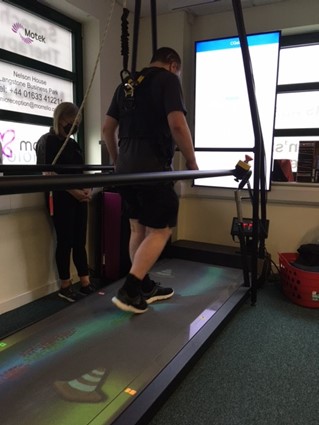
Figure 2: Rhys Holmes training on the C-Mill with the Slalom application
Dr Allison Cooper, Clinical Specialist Neurophysiotherapist at Morrello Clinic:
How often do you use the C-Mill in your daily practice?
As a gait and balance specialist, I am using the C-Mill daily with my caseload. The dosage and frequency that patients are using it varies depending on their needs and tolerance, but most patients use the treadmill as part of their session usually after preparatory work such as stretches, activation and after some movement re-education work (though this may also be carried out on the treadmill as well). Patients on an intensive program (attending on average 5 hours/daily) will use the treadmill regularly throughout the day for periods of 30-60 minutes. Other patients, attending for a more traditional approach (i.e., 1-2 hours, 2-3 times/week) will use the treadmill each session for 30-60 minutes per session.
I also run a Clinical Gait Assessment service that provides patients with a detailed assessment of their gait and balance with recommendations for treatment to improve their walking and help them to achieve their goals. The C-Gait assessment is a core part of that assessment and gives us information about their functional walking i.e., obstacle avoidance, speed adaptation, gait adaptation, reactions to unexpected events etc. which is helpful to plan a treatment schedule and priorities for treatment.
Which workflow are you using?
I use the C-Gait assessment regularly with patients at the start and end of a course of treatment and at regular intervals i.e., monthly to monitor progress. As stated earlier, I use the C-Gait assessment as part of the Clinical Gait Assessment service. I also use the Gait Assessment training program regularly with some patients if we are focused on specific gait parameters such as equalizing weight transfer, stance time, step length etc. This is often done during a session on the treadmill to communicate what our focus is on and to measure change within a session.
In terms of training, this will depend on many factors such as the patient’s goals, the main deficits highlighted by the C-Gait and identified impairments. I often use the Manual Control with slower speeds to focus on movement re-education, alignments etc. with the addition of applications to the Manual Control at more comfortable speeds. I find that the ability to change and modify applications during Manual Control useful as well as the no time limitations.
Which kind of exercises do patients do?
The C-Mill training applications that I use most regularly for walking are Tandem and Slalom, Obstacles (I usually produce a customized protocol depending on patient’s needs), Stepping Stones, Random Stepping Stones, Speed Adaptation, Italian Alps (particularly if the patient’s gait deteriorates with dual tasking), Monster and the various Track applications, commonly Track balls.
For those patients trying to improve their awareness of their midlines and weight transfer around them and particularly weight transfer onto an affected lower limb, I use Symmetry Stand and Traffic Jam commonly and occasionally Soccer Stand and Arkanoid Stand. Patients find the visual representation of their percentage weight transference onto an affected limb extremely helpful, and I often incorporate a stepping task along with this program such as maintaining their weight 100% on a limb whilst stepping up onto a step with the other limb for example.
I may include dual or multi-tasking in a Training Program or Manual Control such as upper limb tasks, cognitive tasks, head, and eye movements etc. depending on the patient’s impairments and goals.
With those patients trying to improve their running, it is easy to set up intermittent running/walking programs.
What do the patients enjoy most from the C-Mill?
They enjoy the challenge and the activities that are incorporated in the C-Mill. The activities with Augmented and Virtual reality can be varied. Patients often like competing with themselves and will note their previous scores and try to beat them. There has also been some healthy competition between patients with programs such as the Soccer Stand.
Which advantages in clinical practice do you see in the C-Mill that you cannot have in your traditional therapy?
It certainly facilitates a greater intensity of practice with the element of fun and competition that makes delivering intensity of practice a better (more tolerable) and needed experience for the patient to reach improvements.
The C-Gait assessment and Gait Assessment provide quantitative data in real time which can easily be shown and explained to the patient, they find the reports generated easy to understand. We can set a baseline measure of gait and balance at the assessment and work on improving it session by session. Automated data collection facilitates patient monitoring.
The treadmill also allows video recording of a patient’s gait or running from the side or rear.
A major advantage is also that on the C-Mill patients feel safe on the treadmill even when being challenged, like this the treadmill can be used with more patients than usual due to the built-in safety features.
Why would you recommend the C-Mill to other clinicians?
With our focus in Morrello of providing intensity of rehabilitation to promote improvement, the C-Mill is an invaluable tool within the clinic, and I use it with most of my balance and gait rehabilitation patients in every session that they attend.
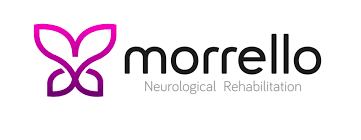
About us
Morrello Clinic is a Specialist Neurological Physiotherapy Clinic in South Wales, UK. We treat a variety of conditions including Stroke, Parkinson’s, Spinal Cord Injury, MS and Head Injuries. We specialize in technology and provide FES, Saebo and other robotic equipment. Our Clinic, mission is to provide the highest quality intervention available for our patients.
NOTE: This clinical experience report is meant to serve as an example of how the C-Mill is used in one particular rehabilitation center. It is not necessarily a standard recommendation from Motek.
